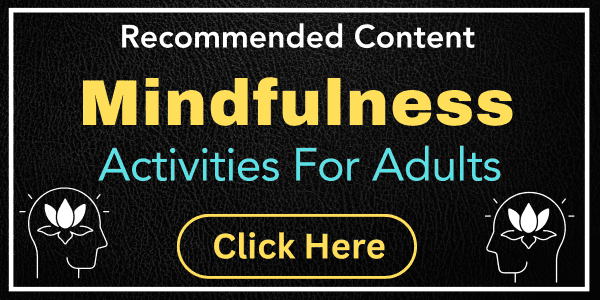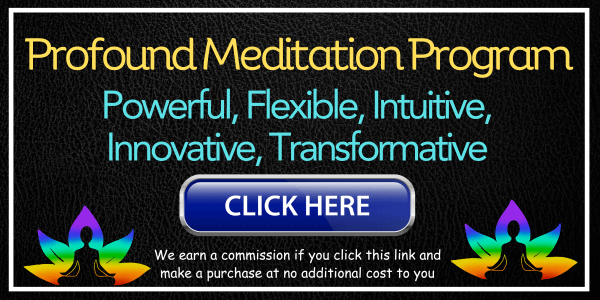To know if you are meditating correctly, watch for these six signs: physical stillness, heightened awareness, a shift from 'doing' to 'being', navigating the mind's chatter without getting swept away, altered perception of time, and experiencing a shift in attitude.
| Section | Summary |
|---|---|
| Introduction | Understanding the importance of knowing if your meditation practice is effective. |
| The Journey to Effective Meditation | Personalizing your meditation journey and setting the right environment for success. |
| Recognizing the Signs of Effective Meditation | Tips and techniques to achieve physical stillness and cultivate presence during meditation. |
| Enhancing Your Meditation Practice | Importance of regular practice and seeking community support for a fulfilling meditation journey. |
| Common Misconceptions About Meditation | Debunking myths and clarifying misconceptions surrounding meditation. |
| Final Thoughts | Encouraging readers to embrace the meditation journey with an open heart and mind. |
| Frequently Asked Questions | Providing clear and concise answers to common questions about meditation. |
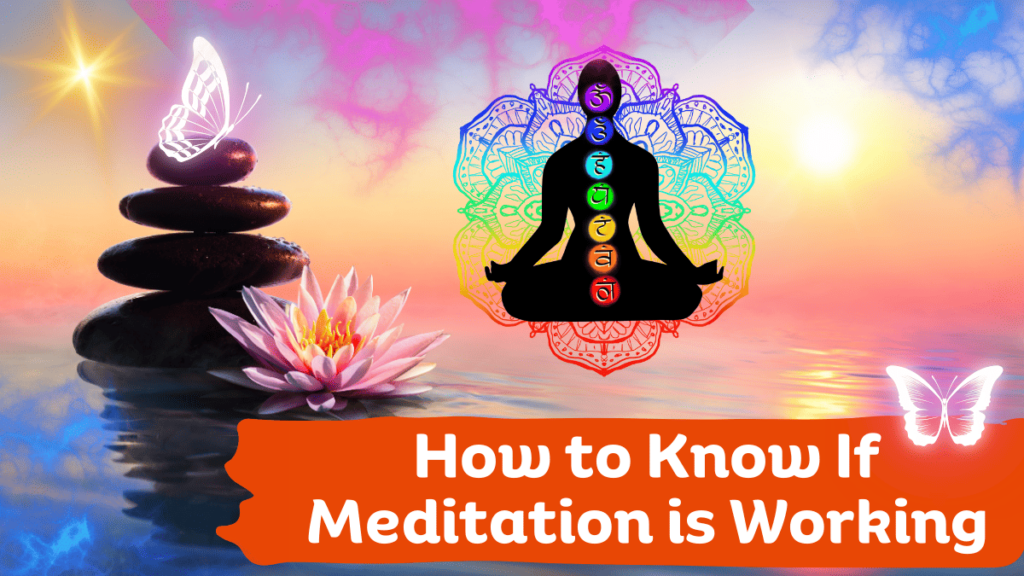
In the bustling world we inhabit, the quest for tranquility often leads us to the doorstep of meditation.
But as beginners embark on this journey, a pressing question arises: “how to know if I meditate correctly and my meditation is working?”
The uncertainty can be daunting, but fret not.
This article is your beacon, shedding light on the subtle signs of successful meditation, and guiding you towards a path of mindfulness and well-being.
I hope this article will serve as your roadmap, guiding you to a state of heightened awareness and well-being.
The Journey to Effective Meditation
Understanding Meditation as a Personal Journey
Embarking on the path of meditation can sometimes feel like stepping into an uncharted territory. But remember, it’s a journey that is as unique as you are.
There isn’t a one-size-fits-all blueprint to it. It’s essential to shed the notion of a ‘perfect’ meditation technique.
Instead, embrace the process with an open heart, allowing yourself to experience and learn at your own pace.
Here, the keyword is ‘personalization’. Tailor your meditation practice to suit your preferences and needs.
Experiment with different meditation techniques until you find the one that resonates with you.
And most importantly, be patient with yourself. Progress in meditation is often subtle and gradual.

Setting the Stage for Successful Meditation
Before you dive into your meditation practice, it’s crucial to set the right stage.
Imagine walking into a serene, welcoming space where you can let go of all your worries and immerse yourself in a state of peace.
That’s what you should aim to create for your meditation sessions.
First, find a quiet corner where you won’t be disturbed. It could be a cozy nook in your home or a tranquil spot in your garden.
Next, choose a time when you can dedicate a few undisturbed minutes to yourself.
Early morning or late evening are generally preferred times, but feel free to choose a time that suits you best.
Your posture during meditation plays a significant role too. Whether you choose to sit on a chair, a cushion, or the floor, ensure that you are comfortable and your back is straight.
This not only facilitates better concentration but also prevents physical discomfort during longer sessions.
As you settle down, take a few deep breaths to center yourself. Focus on the sensation of the breath entering and leaving your nostrils.
This simple act can be a powerful tool to anchor you in the present moment, paving the way for a deeper state of relaxation and awareness.
Remember, the goal here is to create a conducive environment that invites ease of being and stillness, setting the perfect stage for a fruitful meditation session.
Common Misconceptions About Meditation
Meditation Means Having No Thoughts
A prevalent misconception about meditation is the belief that it involves completely silencing the mind, eradicating all thoughts.
However, this is far from the truth. Meditation is more about observing your thoughts without judgment, allowing them to flow freely without getting entangled in them.
It’s perfectly normal to have thoughts during meditation; the key is to return your focus to your breath or chosen point of concentration each time you notice your mind wandering.
You Need to Meditate for Long Periods to Reap Benefits
Many believe that to experience the benefits of meditation, one needs to meditate for extended periods.
However, even short daily practices can bring about positive changes in your life.
Starting with just a few minutes each day and gradually increase the time of your practice – it can be an effective approach.

Meditation is a Religious Practice
While meditation is a part of various religious traditions, it is not a religious practice in itself.
It is a universal practice that people from all walks of life can embrace, irrespective of their religious beliefs.
Meditation is more about connecting with oneself, fostering mindfulness, and enhancing well-being.
Only Certain People Can Meditate
Another misconception is that meditation is only for a select group of people – perhaps those with a particular level of spiritual advancement or those who lead a certain kind of lifestyle.
In reality, anyone can meditate, regardless of age, profession, or background.
It’s a versatile practice that can be adapted to suit individual needs and preferences.
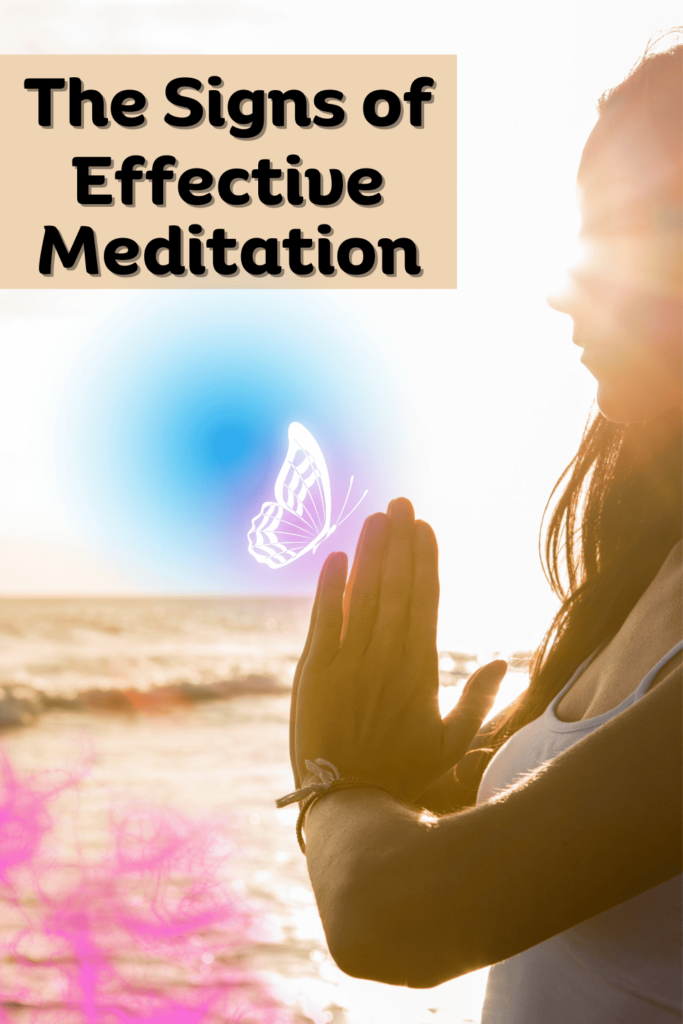
Recognizing the Signs of Effective Meditation
Physical Stillness: The Foundation of Meditation
Embarking on a meditation journey, you might wonder how to gauge your progress. The first sign to look out for is achieving a state of physical stillness. It's not just about freezing in a posture, but finding a calm and steady presence in that stillness. Imagine yourself as a serene lake, undisturbed by the winds of thoughts and external noises. You can facilitate this by envisioning yourself as a rooted tree or a tranquil mountain. This visualization technique can be a powerful ally in helping you attain a state of stillness. Moreover, mindfulness plays a pivotal role here. As you sit in meditation, make a conscious effort to be aware of your body. Feel the contact points where your body meets the chair or the floor. Notice the subtle sensations, be it the gentle breeze caressing your skin or the rhythmic beat of your heart. This heightened awareness of your physical self serves as a gateway to deeper realms of meditation.
The Art of ‘Just Being’
As you progress, you'll notice a shift from 'doing' to 'just being'. It's a sublime state where you are not chasing thoughts or getting entangled in them. You are simply there, present in the moment, embracing the 'now' with open arms. To foster this state, focus on your breath. Let it be your anchor, holding you steady amidst the turbulent sea of thoughts. You might also explore other techniques such as chanting a mantra or conducting a mental inventory of your body, scanning it from head to toe and observing any sensations that arise. Remember, the goal here is to cultivate a light and easy presence, where you are not burdened by the past or anxious about the future. You are simply here, basking in the richness of the present moment.
Navigating the Mind’s Chatter
Contrary to popular belief, meditation is not about silencing your mind completely. It's about learning to navigate through the mind's incessant chatter without getting swept away. It's about observing your thoughts without judgment, letting them come and go like clouds in the sky. To master this, you can employ strategies such as labeling your thoughts. For instance, if a worry about an upcoming meeting pops up, label it as 'thinking' and gently bring your focus back to your breath. This simple technique can be a powerful tool in preventing reactions to thoughts and maintaining a state of equanimity.
Cultivating Heightened Awareness
As you delve deeper into your meditation practice, you'll start to notice a remarkable transformation - a heightened state of awareness where your senses seem to be more alive, more receptive. It's like tuning into a frequency where you can perceive the subtle beauty and intricacies of the world around you with a newfound clarity. To cultivate this, start by paying attention to the sensations that often go unnoticed. It could be the gentle rustle of leaves, the distant chirping of birds, or the fragrance of fresh flowers. Allow yourself to be fully immersed in these experiences, absorbing the beauty and tranquility they offer. Moreover, you can practice mindfulness throughout the day, not just during your meditation sessions. Whether you are eating, walking, or simply resting, make a conscious effort to be present, to really engage with the moment at hand. This continuous practice will gradually lead to a state of heightened awareness, where you find a deeper connection with yourself and the world around you.
The Perception of Time: A Marker of Deep Meditation
As you progress in your meditation journey, you might find that your perception of time begins to alter. In a state of deep meditation, time seems to lose its grip, allowing you to experience moments where it feels like time has either slowed down or become irrelevant. To foster this, avoid clock-watching during your meditation sessions. Allow yourself to be so engrossed in the moment that the concept of time fades away. It's a sign that you are reaching a deeper level of meditation, where you are not bound by the constraints of time. To help you stay present, you might consider using a gentle timer or a meditation app that signals the end of your session without startling you. This way, you can immerse yourself fully in the meditation without the constant urge to check the time. The goal here is not to escape from time but to experience the freedom that comes from being fully present, where you are not rushed by the ticking clock but are at ease, enjoying the richness of each moment.
Experiencing a Shift in Attitude
As you deepen your meditation practice, you may notice a shift in your attitude towards yourself and others. This could manifest as increased compassion, understanding, and a more positive outlook on life. You might find yourself responding rather than reacting to situations, indicating a growing level of inner peace and stability. This shift in attitude is a significant sign of progress in your meditation journey, showcasing the transformative power of regular practice. It's a testament to the fact that meditation not only enhances your mental well-being but also positively influences your interactions with the world around you.
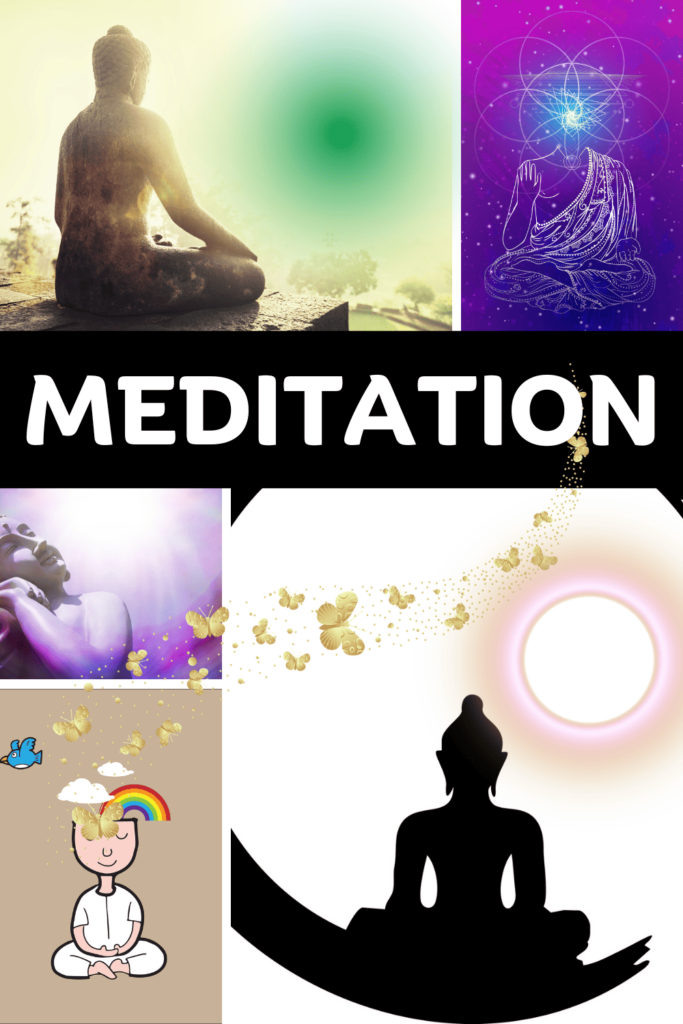
Enhancing Your Meditation Practice
Regular Practice: The Key to Progress
Embarking on a meditation journey is akin to planting a seed. To see it grow and flourish it is essential to regularly nurture it.
In the same way, to truly experience the positive changes meditation can bring, it’s important to make it a daily habit.
You might wonder, how often should you meditate?
While there’s no hard and fast rule, starting with just 5-10 minutes a day can be a good beginning.
As you grow more comfortable, you can gradually increase the duration. The key here is consistency.
Make it a non-negotiable part of your day, a time to reconnect with yourself, to foster a sense of peace and well-being.
To aid in this, you might consider setting a fixed time for meditation, creating a ritual that signals to your mind that it’s time to unwind and focus inward.
Keeping a meditation journal can be a great way to track your progress, noting down your experiences, insights, and the positive changes you observe in yourself over time.
Seeking Guidance and Community
As you delve deeper into the world of meditation, you might find yourself seeking guidance or longing for a community of like-minded individuals.
Connecting with others who share your passion can be a source of inspiration and learning.
Consider joining a meditation group in your locality or online.
Sharing your experiences and learning from others can provide new perspectives and enrich your practice.
If you prefer a more structured approach, you might consider seeking guidance from a mentor or enrolling in a meditation course.
Remember, the journey of meditation is a personal one, but having a community or a mentor can provide support, encouragement, and a sense of belonging, enhancing your practice manifold.
Meditation in Numbers
Meditation has seen a significant rise in popularity over the years, especially in the US. Let’s take a look at some statistics that highlight this growth:
Growth in Meditation Practice in the US (2012-2017)

This graph illustrates the significant growth in the percentage of people who practiced meditation in the US from 2012 to 2017.
Percentage of People who Meditated in the US by Age Group (2017)

This graph shows the percentage of people who meditated in the US in 2017, broken down by different age groups.
Source: DisturbMeNot
Final Thoughts
Starting a meditation practice is like opening a door to a calmer, more focused you. It’s a personal journey, where the goal is to find your unique path to inner peace and mindfulness.
Remember, there’s no “perfect” way to meditate. It’s all about what works best for you.
As you progress, you’ll notice subtle yet positive changes in your daily life, indicating that you are on the right track.
So, go ahead and take that first step. Embrace the practice with an open mind and a willing heart.
You might just discover a deeper connection with yourself and a fresh perspective on life.
Frequently Asked Questions
What are some signs of meditation progress?
Signs of progress in meditation include increased focus, a sense of inner peace, and heightened awareness. You might also notice a decrease in stress levels and a more positive outlook on life.
What is the proper duration for meditation?
There's no one-size-fits-all answer to this. Beginners can start with 5-10 minutes daily and gradually increase the duration. The key is to find a duration that allows you to delve deep without feeling strained.
Can we meditate while lying down?
Yes, you can meditate while lying down. It's a great option for those who find sitting uncomfortable. Just ensure to maintain a straight posture and try not to fall asleep.
How to differentiate meditation and sleep?
Meditation is a state of conscious relaxation where you maintain awareness, whereas sleep is a state of unconscious rest. During meditation, you are alert and focused on a particular point of concentration, while sleep involves letting go of all conscious control.
What are some common meditation mistakes?
Common mistakes include not finding a comfortable posture, being too hard on oneself, and having unrealistic expectations. Avoid these by being patient with your progress and understanding that meditation is a gradual process.
Are you supposed to think during meditation?
It's natural for thoughts to arise during meditation. The goal is not to eliminate thoughts but to learn how to observe them without attachment or judgment, gently bringing your focus back to your point of concentration.
What not to do while meditating?
Avoid checking the clock frequently, getting frustrated with wandering thoughts, and being in a noisy environment. Ensure to find a quiet space where you can meditate without disturbances.
How long does it take to notice a difference with meditation?
The time it takes to notice a difference can vary. Some might experience changes in a few weeks, while for others, it might take a few months. Consistency is key to seeing positive results.
Where should I look when meditating?
During meditation, you can either close your eyes to avoid external distractions or focus your gaze on a specific point in front of you, like a candle flame or a spot on the wall, to help maintain concentration.
You may also be interested in: 1. What is DMT Meditation 2. Zen12 Meditation Program 3. 20-minute Gratitude Meditation 4. What Does It Mean to See Purple During Meditation?



